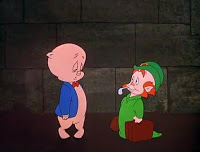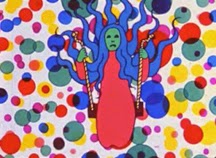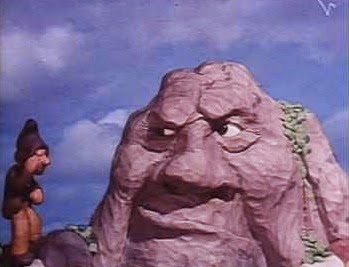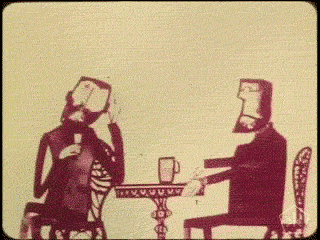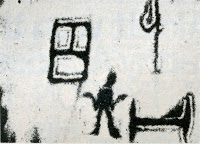Oddball Films presents Surrealism in Animation, a night of 16mm animated shorts from the 1940s-1980s that delve into the non-narrative world of surrealism and dream logic. Realism is overrated and this program explores the magnitude of creative expression when freed from the constraints of rational and linear structures. Get looney with the Salvador Dali-inspired cartoon Dough For the Do-Do (1949), a tribute to surrealism starring Porky Pig. Porky also visits a house haunted with leprechauns and is transported to another Dali-esque landscape in Chuck Jones' The Wearing of the Grin (1951). Brilliant animator Philip Stapp brings us A Picture in Your Mind (1948), a poignant short influenced by surrealist Yves Tanguy and the war torn landscapes of Europe. NFB director and oscar winning animator Norman McLaren gives us a breathtaking serene and ever-changing and morphing landscape of his own in A Phantasy (1952). James Gore's Sixshortfilms (1973) is a stream of consciousness animation of faces warping into demons and birds transforming into telephones to strange and surreal effect. Oddball's all-time favorite cartoon Ego (1970) is a nightmarescape of sexuality, fascism, consumerism, a naked Mona Lisa and a host of other explosive imagery. Psychedelic animator Vince Collins loses his mind in the eye-popping Fantasy (1973). The visionary artist Jan Lenica, (among Roman Polanski's biggest influences) gives us a hip animated version of Ionesco's Rhinoceros (1965) utilizing collage and cut-outs. One naked little boy floats away from his bed and ends up baked in a pie in an adaptation of Maurice Sendak's censored, but much-loved In the Night Kitchen (1975). Eliot Noyes Jr. creates dreamy animation out of sand in Sandman (1970). Plus more surprises for the early birds and everything screened on 16mm film from our massive stock footage archive. Let reason go and travel to a world of unbridled imagination.
Date: Thursday, December 8th, 2016 at 8:00pm
A Picture in Your Mind (Color, 1948)
Sent by the U.S. government as a participant in the Marshall Plan with a specific mission to assist the French in re-gearing their animation studios, brilliant animator Philip Stapp discovered a Europe much-decimated by war, but in further danger of annihilation by nuclear weapons. Returning to the U.S., he produced this alarming-yet-hopeful film, replete with its lonely, Tanguy-inspired landscapes peopled with static figures casting long shadows across charcoal-colored plains. While taking the risk of leaning a bit toward didacticism, Stapp managed to urgently convey the thought that world destruction was not necessarily inevitable, provided that people embrace, rather than reject their cultural and racial differences. ‘Picture’ is a unique document resulting from the sometimes dreamy, sometimes nightmarish vision of the artist in a war-torn land, with the spectre of death hovering ever-so-slightly ahead. - afana.org
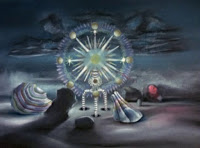
A Phantasy (Color, 1952)
Cut-out animation by Norman McLaren, and music for saxophones and synthetic sound by Maurice Blackburn. In a dream-like, meditative and surreal landscape drawn in pastel, inanimate objects come to life to disport themselves in grave dances and playful ritual.

Your Face (Color, 1987)
This film set the style and started career of famed animator Bill Plympton. One of the most popular short films ever made, it’s still showing all over the world. As a second- rate crooner sings about the beauties of his lover’s face, his own face morphs into the most surreal shapes and contortions imaginable. The music was written and sung by Maureen McElheron, then slowed to sound like a man’s voice because Plympton was too cheap to hire a male singer. Your Face earned an Academy Award nomination for Best Animated Short in 1988.
Porky gets caught in a storm and ends up staying the night at a haunted hotel run by Leprechauns. Two of the little men suspect the swine of eyeing their golden fortune so they put Porky on trial and sentence him to wear magical green shoes that transport him to a Salvador Daliesque nightmare world.
Ego (Color, 1970)
One of the most phenomenal animated shorts of the collection, this surreal masterpiece starts with traditional comic-style animation until the factory-working family man goes to sleep and unleashes his subconscious thoughts sending him into a battleground of situations. His bizarre dreams lead him to Freudian juxtapositions of sex and gruesome fascism. Bozzetto utilizes a number of animation styles including optical printing and pop art imagery and a wild soundtrack by the ultra-lounge master Franco Godi to create the most unforgettable 9 minutes of cartoon history.
Sandman (1970, color)
A sand animation film. The sandman goes to bed and drifts off to dreamland. Feel the bare fingers playing in the sand in this film by Academy Award winner and Sesame Street animator Eliot Noyes.
Curator’s Biography
Kat Shuchter is a graduate of UC Berkeley in Film Studies. She is a filmmaker, artist and esoteric film hoarder. She has helped program shows at the PFA, The Nuart and Cinefamily at the Silent Movie Theater and was crowned “Found Footage Queen” of Los Angeles, 2009. She has programmed over 250 shows at Oddball on everything from puberty primers to experimental animation.
Our screenings are almost exclusively drawn from our collection of over 50,000 16mm prints of animation, commercials, educational films, feature films, movie trailers, medical, industrial military, news out-takes and every genre in between. We’re actively working to present rarely screened genres of cinema as well as avant-garde and ethno-cultural documentaries, which expand the boundaries of cinema. Oddball Films is the largest film archive in Northern California and one of the most unusual private collections in the US. We invite you to join us in our weekly offerings of offbeat cinema.



